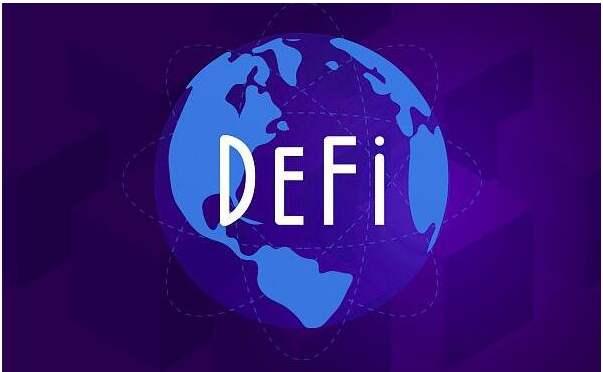Deep Deconstruction of the Three Stages of Curve War Development
Source: Deep Chain Finance
Author: Blaukqin
With the participation of more mainstream projects and the emergence of derivative projects, the concept of Curve War has once again come back into our view.
Since the native token CRV of Curve was issued in August 2020, the Curve War has already begun, but the strategies have varied at each stage, from the initial simple increase in market-making rewards, to the birth of Convex completing governance nesting, and advanced bribing votes; the protocols entering the game have evolved from Yearn & Stake DAO, to Olympus DAO & FRAX, to various stablecoin projects like Alchemix & Abracadabra, to new projects [Redacted] Cartel, and even this Curve model has begun to exhibit spillover effects.
In this article, we will review the evolution of Curve War, observe the current spillover phenomenon of this model, and the surrounding strategies.
Background Knowledge
Curve is an AMM focused on low slippage for stablecoins, and it issued its native token CRV in August 2020 to incentivize liquidity provision. CRV serves as both a governance token and a utility token, but to gain these rights, CRV holders must stake their CRV as veCRV. The locking period for veCRV has four options: one year, two years, three years, and four years, and the longer the user locks their CRV, the more veCRV they receive. Specifically, locking 1 CRV for 4 years yields 1 veCRV, while locking for one year only yields 0.25 veCRV.
veCRV cannot be transferred, and as the locked CRV approaches its expiration, the amount of veCRV will linearly decay. Therefore, if one does not consider unlocking, it is necessary to periodically refresh the CRV locking time to maintain the highest proportional weight.
veCRV has three main uses:
- Used for voting governance.
- Earn 50% of the protocol's trading fees: returned to veCRV holders by repurchasing Curve's stable pool LP Token 3CRV (i.e., the DAI+USDC+USDT pool).
- Increase liquidity market-making rewards.
- Potential airdrop opportunities: continuous airdrops of tokens from other projects supported and partnered with Curve, such as the DEX project Ellipsis on BSC, which will airdrop 25% of its total token EPS to veCRV users, and Convex's token CVX will also airdrop 1% of its total to veCRV users.
The daily output of CRV used for liquidity mining incentives is allocated by Curve's DAO core module "Gauge Weight Voting." Users can vote in "Gauge Weight Voting" with their veCRV to determine the allocation ratio of CRV in various liquidity pools for the next week. Pools with higher allocation ratios are more likely to attract sufficient liquidity.
Yield Competition of the Gun Pools: Yearn Dominates
The first phase of Curve War can be defined as the "yield competition of the gun pools," primarily dominated by Yearn, with other gun pools following.
Due to its stable yield capabilities, strong capital capacity, and good security, Curve is almost one of the core sources of yield for all Ethereum gun pools. They raise assets from users, wrap them in layers, and deposit them into Curve to earn rewards from fees + CRV tokens.
At this time, in addition to needing to purchase a large amount of CRV and lock it to increase their market-making rewards, they also need to work on product design.
Product Design of Gun Pool Yearn
Aggregating a large amount of stablecoins (yVault) to mine in Curve, and the CRV token rewards obtained are 90% sold into stablecoins for further compounding mining.
The remaining 10% of CRV rewards are staked as veCRV, specifically creating a new pool called yveCRV Vault, accepting new CRV stakes. Since there is this additional 10% CRV reward, the yield from staking CRV in yveCRV Vault will be higher than directly staking in Curve, making it more attractive to users. At this time, the newly accumulated veCRV weight in yveCRV Vault can further accelerate the market-making yield of the stablecoin pool, earning more CRV rewards. Meanwhile, Yearn also converts the fee rewards from yveCRV Vault, 3CRV, into CRV for compounded staking as veCRV, and this part is separately made into a yvBoost Vault to continue accelerating stablecoin yVault mining, thus forming a flywheel effect. (Note: This was Yearn's early strategy, which has since changed, primarily relying on Convex now.)
Additionally, some may notice that while staking CRV as veCRV can achieve good yield returns, it lacks an exit mechanism. Therefore, to provide a better user experience, Yearn also launched liquidity pools for yveCRV/ETH and yvBoost/CRV.
Subsequently, other gun pools like Stake DAO also joined the fray, but their gameplay is basically similar.
However, the emergence of Convex marked the entry of Curve War into the next phase.
Governance Nesting: Convex
Convex is a one-stop platform focused on simplifying the Curve usage process for CRV staking and liquidity mining. If you have ever participated in liquidity provision on Curve, you will understand that its retro interface and staking logic are not user-friendly. Convex allows liquidity providers to participate in Curve through its own entry, enabling users to stake CRV, claim CRV rewards, and unlike the direct locking and time-weighted restrictions on Curve, users can earn rewards without locking CRV.
Product Design of Convex
- First, let's talk about Convex's Curve LP pool. Users can stake their LP tokens from Curve into the corresponding pool in Convex. In Yearn's design, Yearn is compounding yields, so you can see the growth of the principal; however, Convex directly distributes rewards to users, but the platform will take 17% of the CRV rewards.
- In Convex, users can also convert CRV into cvxCRV and then stake cvxCRV. This pool can earn rewards belonging to veCRV (as mentioned earlier, protocol fees in the form of 3CRV and airdrop opportunities), plus 10% of the CRV rewards collected by the platform (in the form of cvxCRV), as well as rewards from Convex's native token CVX. (It is worth noting that at this point, users in the cvxCRV pool no longer have the governance rights that CRV provides.)
- Users holding the native token CVX have two options: staking or locking (for at least 16 weeks). The yield comes from 5% of the CRV rewards collected by the platform (in the form of cvxCRV), with the yield from locked CVX being higher than that from staking (sometimes additional yields are allocated to the locked CVX pool), and the locked CVX also has similar voting governance rights as veCRV.
- Similarly, cvxCRV also has a cvxCRV/CRV trading pair on SushiSwap for users to exit in the secondary market.
It is worth mentioning that in Convex's product design, the governance rights and yield rights of veCRV are actually separated:
- The cvxCRV obtained by converting and staking CRV represents the yield rights of veCRV.
- The vlCVX obtained by locking CVX represents the voting governance rights of veCRV.
Thus, Convex successfully accumulated a large amount of CRV through its product economic model design and the additional rewards of its native token CVX, while granting Curve's voting governance rights to the native token CVX.
According to recent statistics from Delphi, currently, 85% of Curve's TVL is staked through Convex, and Convex has become the largest holder of veCRV, accounting for 47% of the total.


As Curve's TVL continues to grow, various algorithmic stablecoin projects in the industry have gradually realized that Curve can effectively support the peg of their stablecoin prices and maintain a certain depth of liquidity.
The entry of algorithmic stablecoin projects also marks the next phase of Curve War.
Accumulating CVX & Bribing Votes: Algorithmic Stablecoin Projects Striving for Liquidity
Typically, projects like algorithmic stablecoins want to achieve better liquidity on Curve by increasing the market-making yield of their corresponding trading pair pools. Currently, there are two methods to increase yield: one is to use the project's native token as an additional incentive; the other is to vote to increase the CRV incentives for the trading pair pool.
The first method is not much of an issue, but for the second method, since Convex has firmly established its dominance over Curve's governance voting rights, project parties no longer attempt to purchase CRV for staking votes but instead turn to CVX, as CVX also has governance voting rights over Curve. Therefore, some refer to this phase as the Convex War.
According to recent statistics from Delphi, we can understand the current situation of various protocols holding CVX:

For protocols, purchasing CVX and then locking it as vlCVX to participate in governance voting is not only cumbersome but also amplifies the protocol's risk exposure, while the protocol's goal is merely to obtain votes to increase the market-making yield of their corresponding pools, thereby strengthening liquidity.
The market will always move towards the direction with the least friction, and thus, a new solution has emerged: bribing votes.
- https://bribe.crv.finance/: Purchase veCRV votes. This bribery tool was created by Yearn founder Andre Cronje, allowing protocols to use this tool to bribe veCRV holders with token rewards in exchange for users' votes.
- https://votium.app/: Purchase vlCVX votes. The model is similar to the former, but since vlCVX has delegation functionality, it is more flexible in form.
Protocols seem to prefer this method; in November 2021, Frax Finance even passed a vote to increase the Votium bribery budget from $500,000/bi-weekly to $1,000,000/bi-weekly.
Other Peripheral Play & Liquidity Games of Curve War
Throughout the journey of Curve War, it has mainly gone through the three major phases mentioned above, but there are still some interesting projects/play around this theme and combined with the DeFi 2.0 narrative. For example, using Bond mechanisms to accumulate CRV or CVX tokens (LobisDAO, REDACTED, etc.), or adopting a veToken + Gauge model (Yearn's new token economic model, Frax, etc.).
It is worth mentioning the [REDACTED] Cartel project, which is a DAO that uses the OlympusDAO Bond mechanism to accumulate CRV, CVX, and Curve LP to gain more Curve Gauge voting rights. If we consider Curve as the L1 liquidity asset, then Convex is the L2 that expands Curve's influence and liquidity, while [REDACTED] Cartel aims to be L3, a yield aggregator's yield aggregator. At the L3 level, there is less interaction with liquidity assets, mainly guiding the distribution of voting assets, which is why it initially accumulated a large amount of CRV & CVX. Although the current roadmap has not been fully finalized, the first goal is to focus on handling veCRV-Gauge voting rights.
The liquidity demand from various DeFi protocols (mainly stablecoin projects) is the main factor pushing Curve War to its climax, and we can foresee that this demand will continue for some time, so Curve War will undoubtedly persist. However, will there be disruptive competitors?
Yes, Tokemak!
Tokemak is a sustainable liquidity protocol, and various DeFi protocols can obtain trading pair liquidity on Tokemak and deploy it on exchanges (if they can get enough TOKE token votes) to enhance the liquidity of their own tokens. However, Tokemak is more geared towards general protocols, while Curve is more suitable for algorithmic stablecoin protocols.
Essentially, Tokemak can also help protocols in need of liquidity with ongoing liquidity guidance, rather than the temporary and costly guidance methods of traditional early liquidity mining. The key point in Tokemak is obtaining votes for TOKE tokens. Of course, Tokemak currently faces many challenges, such as insufficient TVL, complex and cumbersome business logic processes, and protocols needing to apply for token reactors to obtain liquidity, followed by a secondary vote and then waiting for liquidity deployment. In contrast, Curve, as an AMM focused on low-slippage stablecoin exchanges, naturally does not have these obstacles.
Conclusion
Liquidity is one of the important components in the DeFi space, and the emergence of Curve has provided a solution to the liquidity challenges faced by algorithmic stablecoin projects. The liquidity games in the DeFi space will continue in the future, and we look forward to various innovative and interesting gameplay emerging, pushing Curve War or liquidity games into another new phase.










